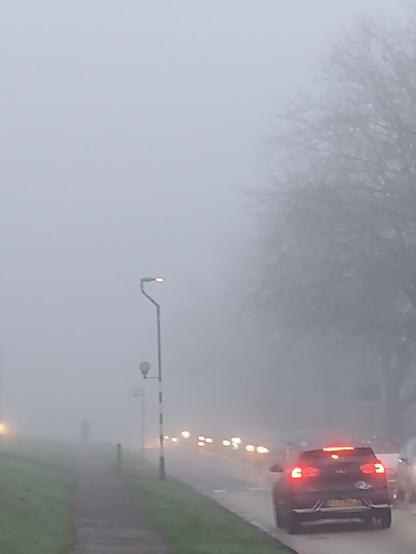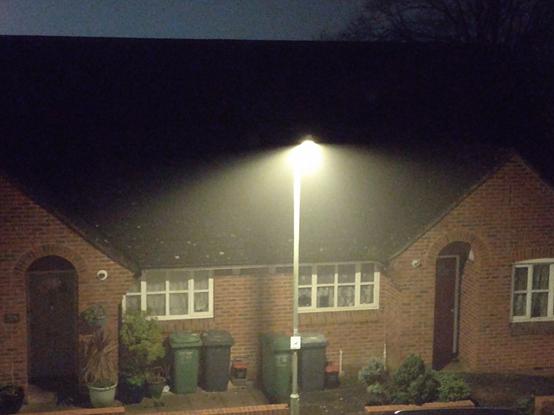#PhysicsFactlet
Inspired by a short thread by @johncarlosbaez (https://mathstodon.xyz/@johncarlosbaez/114459727454034873) I made a visualization of a Stone-Wales defect in fullerene, released it into the #PublicDomain, and uploaded it on Wikimedia Commons.
https://commons.wikimedia.org/wiki/File:Stone-Wales_defect_in_Fullerene.gif
#PhysicsFactlet
#PhysicsFactlet Remake of an old animation about quantum tunnelling in the time domain. 🧪⚛️💡 A few details: * The incident and reflected wavefunctions interfere, creating fringes when it hits the barrier. * Even when far away from the barrier, the wavefunction is slowly broadening.
#PhysicsFactlet
I had to redo an old animation about quantum tunnelling in the time domain, so why not post it here?
#QuantumMechanics #ITeachPhysics
A few details:
* The incident and reflected waves interfere, creating fringes in the wavefunction modulus when it hits the barrier.
* Even when far away from the barrier, the wavefunction of the "free" particle is slowly broadening.
#PhysicsFactlet
It's a foggy day here in Albion, so let's talk about light (multiple) scattering!
Fog is composed of micrometre sized water droplet that can scatter light. This has two main effects: some of the light that was supposed to reach your eyes don't (because it is scattered away), and some of the light that was not supposed to reach you gets scattered into your eyes.
The denser is the fog and the further an object is from you, the more likely light is to be scattered away before it reaches your eyes. The amount of unscattered light (i.e. the one your eyes can use to form a sharp image) goes down exponentially (Lambert-Beer law), so an object in the fog gets dimmer pretty quickly. On the other hand there is a chance that light that was never meant to reach you is now scattered into your eyes, but since it arrives from a largely random direction, mixed up with a lot of other scattered light, your brain perceived it as a white blur on top of everything else. And since far away object were already dim, this white halo can easily overpower them, so you can't see them anymore.
#PhysicsFactlet
Light propagates in a straight line (actually it is more complicated than that, but this is good enough for us here) and we see only the light that comes to our eyes. As a result you usually don't see the light going from its source to the objects it illuminates.
Unless it is misty, in which case light can scatter on the water droplets and you can "see" the light's path ("Tyndall effect").
#PhysicsFactlet
Do you want an interpretation of quantum mechanics that doesn't really work that well in practice, but that would look fantastic for your Sci-Fi novel? I have for you "Many interacting words" (not to be confused with the similarly named "Many worlds interpretation").
In this interpretation the universe is 100% classical, but instead of being one universe there is a VERY large number of them, all classical and weakly interacting with each other. In particular each particle is classical, but is repelled by its "copies" in the other universes. This is able to replicate a lot of the most weird effects of quantum mechanics. For instance, classically a particle is not able to overcome a potential barrier if it doesn't have enough energy to do so, but in this interpretation the particle would be repelled by its copies, so it has a non-zero chance of getting enough of a kick to jump on the other side of the barrier, producing the phenomenon we usually call "quantum tunnelling".
Another effect replicated by this model is the "zero point energy" i.e. the fact that the lowest energy a particle can have is not zero, but a bit higher than that. In this interpretation this comes to be because the particle (which is classic) would like to sit at zero energy, but so do all of its "copies", and they repel, so none of them can really sit at zero energy.
If you want, in this interpretation the very fact we see quantum effects is evidence of parallel universes!
https://journals.aps.org/prx/abstract/10.1103/PhysRevX.4.041013
#PhysicsFactlet
Schematic of the epicycle model, as requested by @johncarlosbaez (see https://mathstodon.xyz/@johncarlosbaez/113652794327730499 for his thread on the topic).
Apart from having (hopefully) more colorblind-friendly colors, this one is in the #PublicDomain instead of being copyrighted.
#Physics #Astronomy
#PhysicsFactlet: The "Ashcroft/Mermin Project" Chapter 7: Crystal systems
As a Bravais lattice must be invariant under discrete translations, there are only a small number of possible types of Bravais lattices (5 in 2D and 14 in 3D).
#Physics #ITeachPhysics
#PhysicsFactlet: The "Ashcroft/Mermin Project" Chapter 6: Diffraction from a crystal
A wave with a wavelength comparable with the interatomic spacing of a crystal will diffract, resulting in intensity peaks at different angles, that act as a "fingerprint" of the crystal structure.
#PhysicsFactlet
A work in progress (trying to show diffraction by a crystal, but right now the whole thing is way too messy).
#PhysicsFactlet
Not a great animation, but I made it for a lecture, so I am sharing it 😃
Electric (red line) and magnetic (black lines) fields of the TE₁,₁ mode propagating in a rectangular waveguide.
Not a #PhysicsFactlet, but a full beginner-friendly tutorial on how to use speckle correlations for imaging through a scattering medium, complete with a step-by-step guide on how to set up your first experiment and analyse the data (including a full code in Mathematica and one in Matlab to analyse the data, and all the raw data used to generate the plots to make your tests):
#Physics #Optics #Photonics #ITeachPhysics
https://iopscience.iop.org/article/10.1088/2515-7647/ad7cb1
#PhysicsFactlet
Game of life, played on a Klein bottle (still very much a work in progress)
#ITeachMath #ITeachPhysics
#PhysicsFactlet
Temporal coherence can be a bit confusing the first time you encounter it, so I made a small animation that might help teachers to explain it to students.
#ITeachPhysics #Optics #Physics
#PhysicsFactlet
If you ever studied any Physics in school you probably know that the trajectory of an object thrown in a uniform gravitational field will be a parabola.
But if the drag (e.g. due to the atmosphere) is not negligible, the trajectory will be much more skewed, and it will fall almost vertically after reaching its maximum height.
#Physics #ITeachPhysics
#PhysicsFactlet How does a fridge magnet works?
You can qualitatively think of most magnetic materials as made of a lot of tiny smaller magnets, each with a "North" and a "South" pole. North and South attract, while North/North and South/South repel.
Magnetic materials come in a lot of flavours, but the two we are interested in now are ferromagnets and paramagnets.
Ferromagnets, have all their tiny magnets interacting strongly with each other in a way that makes them all nicely aligned and stable. (Yes, this is a simplification. Run with it.)
Paramagnets (like the steel of your fridge) also have all the tiny magnets, but their interaction is weak enough that their orientation is largely due to thermal random fluctuations. That is, until a ferromagnet gets close enough. Then the field of the ferromagnet is strong enough to (at least locally) orient the tiny magnets to align with the ferromagnet ones. Now the paramagnet is showing a lot of "South" poles to the "North" part of the ferromagnet, and a lot of "North" poles to the "South" part of the ferromagnet, so the two attract and the fridge magnet stay put!
#Physics #ITeachPhysics #Magnets #Visualization
@j_bertolotti true, nothing beats trying to do it yourself. I just had a look at your #physicsfactlet posts and although I don’t understand any of it, the visuals are really impressive! :)
#PhysicsFactlet: The "Ashcroft/Mermin Project" Chapter 5: The reciprocal lattice
Every crystal plane is perpendicular to a combination of the reciprocal lattice vectors. The (integer) coefficients of these combinations are known as "Miller Indices".
#PhysicsFactlet: The "Ashcroft/Mermin Project" Chapter 5: The reciprocal lattice
The "reciprocal" of a Bravais lattice is the set of k-vectors that yield a plane wave with the same periodicity of the Bravais lattice (i.e. effectively the Fourier transform of the lattice).
#PhysicsFactlet
The human eyes have "only" 3 different colour receptors, so multiple spectra can be perceived as the same colour.
(And this without considering all the ways the signal is processed before you actually "see" it.)
#Optics #Colour #Color #Vision

